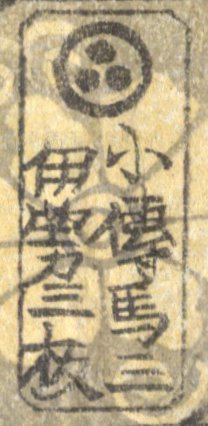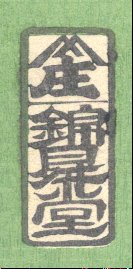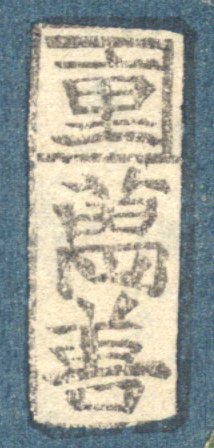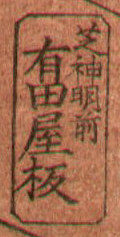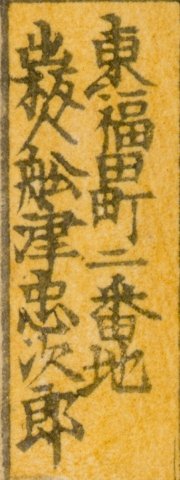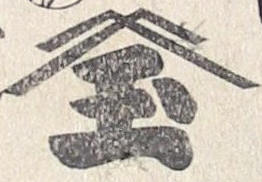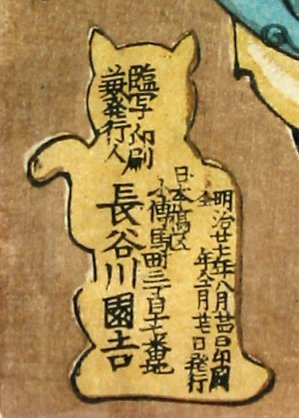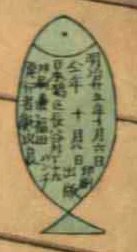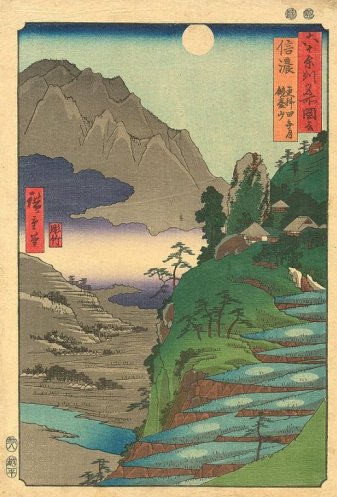
JAPANESE PRINTS
A MILLION QUESTIONS
TWO MILLION MYSTERIES
Ukiyo-e Prints浮世絵版画 |
|
Port Townsend, Washington |
|
PUBLISHERS 版元 はんもと HANMOTO |
|
WHAT DO WE KNOW ABOUT JAPANESE PUBLISHERS?
NOT MUCH! |
|
|
|
As far as I know there is very little information - real information - to be found in English about Japanese publishers. There may not be much more than that in Japanese. I don't know. We do have some of the addresses of the publishers and/or the personal names of the owners of particular houses, but knowing an address in early 19th century Edo or Osaka doesn't tell us much more than knowing a particular address in modern Ulan Bator or in ancient Rome. And yet several authors insist on providing these. Perhaps the addresses could be a jumping off point for further research. Don't hold your breath.
At least we do know something about the relationships between publishers and artists. By and large the artist was a contract worker. Publishers thought of themselves as the most important figures in the production process while from the perspective of some artists it was the other way around. This is not a chicken vs. egg issue. The artist needed the publisher and vice versa. And yet today we identify each print according to the name of the artist and rarely does the name of the publisher trip off the tongue.
Then why do we care? We care for several reasons: authentication is one. Porcelain collectors look for factory marks. Silver devotees look for telltale hallmarks. Identifying and knowing who the publishers were helps, but very little. But one of these days I think it may mean a lot more.
For a number of years I have wished that someone or some institution would organize an exhibition based on the prints coming from just one important publishing house or even several competing ones: Such an exhibition could be arranged chronologically, by artist, by theme, etc., and would begin to give us a better idea of the role and significance of such houses. Perhaps this is too academic an approach and would not be of interest to enough people or anyone but me for that matter. It is the big artistic names which draw the crowds and provide the revenue. But when you consider that certain publishers must have played very influential roles in shaping the market and the direction of public tastes this might not be such a bad idea. Consider the number of exhibitions which have been devoted just to Kuniyoshi: The standard for these exhibitions has always been based on genres or chronologies, but never by publishing houses. |
|
|
|
CLICK ON THE IMAGES OF THE PRINTS SHOWN BELOW TO SEE LARGER EXAMPLES. |
|
Organizing Japanese Publisher Seals By Categories |
|||||
|
|
|||||
|
Lists of Japanese publishers are often organized generally according to shapes. This is not exactly a hard and fast rule because there is a miscellaneous category, but overall that is how it is done. Frank A. Turk in his volume The Prints of Japan (p. 305) states: "The trade marks given here are arranged in accordance with the scheme first used by Mr. B. W. Robinson in his monograph on Kuniyoshi...." This may not be exactly true because Robinson may have been following the Japanese model. However, as Turk adds "...a scheme which in practice has proved to be very useful indeed." The categories are: |
|||||
|
1. WITHIN A CIRCLE (Go to the alphabetical list on the next page for more information about each publisher and links to print images with each particular seal. To do this click on the image of the baren at the bottom of this page. Also, the black or white borders found on some of the examples shown here were added by us for graphic purposes and do not exist on the actual prints.) |
|||||
|
|
|
||||
|
|
|
||||
|
|
|||||
|
Kobayashi-ya Taijiro |
Maru-ya Jimpachi |
Ōtaya Takichi |
|||
|
|
|||||
|
Murata-ya Jirobei |
Masugindō |
Echizen-ya Hachiemon |
|||
|
|
|||||
 |
 |
||||
|
Iba-ya Kyūbei |
Iwato-ya Kisaburō |
Ise Mago |
|||
|
|
|||||
|
|
|
||||
|
Fukuda Kumajirō |
|
Hōeidō |
|||
|
|
|||||
|
2. WITHIN A HEXAGON OR OCTAGON |
|||||
|
Daikoku-ya Kinnosuke |
|||||
|
|
|||||
|
3. WITHIN A SQUARE |
|||||
|
|
|||||
|
Koga-ya Katsugorō |
Sano-ya Kihei |
Shimizu |
|||
|
|
|||||
|
Eijudō |
Ebisu-ya Shōshichi |
Arita-ya Seiemon |
|||
|
|
|||||
|
Sumimaru-ya Jinsuke |
|||||
|
|
|||||
|
4. WITHIN A RECTANGLE |
|||||
|
Aito |
Ebisu-ya Shōshichi |
Etsu-Ka |
|||
|
|
|
|
|||
|
Fujioka-ya |
Gusoku-ya Kahei |
Honsei |
|||
|
|
|
|
|||
|
|
|||||
|
Ise-ya Kanekichi |
Ise Yoshi |
Izumi-ya Ichibei |
|||
|
|
|
|
|||
|
Izumi-ya Ichibei |
Izumi-ya Ichibei |
Kaga-ya Kichiemon |
|||
|
|
|
|
|||
|
Kaga-ya Yasubei |
Kawaguchi-ya Uhei |
Ki-ya Sojiro |
|||
|
|
|
|
|||
|
Maru-ya Heijiro |
Minato-ya Kohei |
Sano-ya Kihei |
|||
|
|
|
|
|||
|
|
|||||
|
Takemura Hideo |
Tsujioka-ya Bunsuke |
Tsujioka-ya Bunsuke |
|||
|
|
|
|
|||
|
|
|||||
|
Tsunashima Kamekichi |
Tsunoi |
Uo-ya Eikichi |
|||
|
|
|
|
|||
|
Uo-ya Eikichi |
Yamaguchi-ya Tōbei |
Yorozu-ya Magobei |
|||
|
|
|||||
|
|
|||||
|
Tama-ya Sosuke |
Hirano-ya Shinzō |
Izutsu-ya Sanemon |
|||
|
|
|||||
|
Ise-ya Kanekichisaburo |
Ise-ya Sanjirō |
Daikoku-ya Heikichi |
|||
|
|
|||||
|
Maru-ya Kiyūshiro |
Ebisu-ya Shōshichi |
Tsuru-ya Kiemon |
|||
|
|
|||||
|
Manzen |
Kawaguchi-ya |
Tenki |
|||
|
|
|||||
|
Arita-ya Seiemon |
Edo-ya Matsugoro |
Kazusa-ya Iwakichi |
|||
|
|
|||||
|
|
|||||
|
Maru-ya Seijiro |
Kinkadō |
Kagi-ya Shōjirō (This attribution is tentative. See the page with the alphabetical listing for the reason why.) |
|||
|
|
|||||
|
|
|||||
|
Izutsu-ya Shōkichi |
Wata-ya Kihei |
Jōshū-ya Kinzō |
|||
|
|
|||||
|
Iba-ya Senzaburo |
Ōta-ya Takichi |
Daikoku-ya Kinnosuke |
|||
|
|
|||||
|
Ōta-ya Takichi |
Ebi-ya Rinnosuke |
Ebi-ya Rinnosuke |
|||
|
|
|||||
|
|
|||||
|
Kawaoto |
Nishimura Yohachi |
Funazu Chūjirō |
|||
|
|
|||||
|
Sano-ya Kihei |
Mita-ya Kihachi (This has been corrected from an earlier attribution thanks to the careful attention of our contributor ED. Thanks ED!) |
Kawaguchi-ya Shōzō |
|||
 |
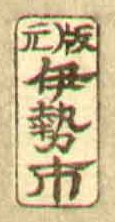 |
 |
|||
|
Jōshū-ya Kinzō |
Ise-ya Ichibei |
Nuno Kichi |
|||
|
|
|||||
|
Morita-ya Hanzō |
 Kakumoto-ya Kinjirō |
Hon-ya Seishichi |
|||
|
|
|
||||
|
Yamashiro-ya Jinbei |
Koshimura-ya Heisuke |
Ise-ya Tokichi |
|||
|
|
|||||
|
|
|
||||
|
Sumiyoshi-ya Masagorō |
Wakasa-ya Yoichi |
Wata-ya Kihei |
|||
|
|
|||||
 |
|
||||
|
Shimizu-ya Tsunejirō |
Ise-ya Rihei |
Arita-ya Seiemon |
|||
|
|
|||||
|
5. WITHIN A FAN SHAPE |
|||||
|
Iba-ya Senzaburo |
|||||
|
|
|||||
|
Senri |
|||||
|
6. WITHIN AN ANGLE |
|||||
|
|
|||||
|
Kichi |
Azuma-ya Daisuke |
||||
|
|
|||||
|
7. WITHIN A LOZENGE OR DIAMOND |
|||||
|
Ebi-ya Rinnosuke |
Wakasa-ya Yoichi |
||||
|
|
|||||
|
|
|||||
|
Idzutsuya Denbee |
Ya |
||||
|
|
|||||
|
8. WITHIN A TRIANGLE No examples yet. |
|||||
|
|
|||||
|
9. UNDER A SINGLE 'MOUNTAIN' |
|||||
|
Fujioka-ya Hikotarō |
Ise-ya Rihei |
Itō-ya Yohei |
|||
|
|
|
|
|||
|
Mikawa-ya Denbei |
Shimizu-ya Naōjirō |
Yahata-ya Sakujiro |
|||
|
|
|
|
|||
|
Hori Takichi |
Nishimura Yohachi |
Nishimura Yohachi |
|||
|
|
|
|
|||
|
Ōtaya Takichi |
Ōmi-ya Heihachi |
Mori-ya Jihei |
|||
|
|
|||||
|
Enshu-ya Matabei |
Tsujioka-ya Bunsuke |
Izutsu-ya Shōkichi |
|||
|
|
|||||
|
Kiyomizu-ya |
|||||
|
|
|||||
|
10. UNDER A DOUBLE 'MOUNTAIN' |
|||||
|
Jōshū-ya Kinzō |
Tsuta-ya Jūzaburō |
Yamato-ya |
|||
|
|
|||||
|
11. UNDER A TRIPLE 'MOUNTAIN' |
|||||
|
Tsuta-ya Kichizō |
Matsumura Tatsuemon |
||||
|
|
|||||
|
12. UNDER CROSSED 'HOCKEY STICKS' |
|||||
|
|
|||||
|
Eikyudo (aka Yamamoto-ya Heikichi and Yamamoto Kyūbei) |
Morita-ya Hanjirō |
||||
|
|
|||||
|
13. IN A VASE, GOURD OR BAG |
|||||
|
Hiro-ya Kosuke |
Wata-ya Kihei |
Wata-ya Kihei |
|||
|
|
|||||
|
14. SINGLE UNENCLOSED CHARACTERS OR SIGNS |
|||||
 |
|||||
|
Yamaguchi-ya Tōbei |
Imari-ya Ushizō | ||||
|
|
|||||
|
15. MISCELLANEOUS |
|||||
|
|
|||||
|
Hasegawa Sonokichi |
Shimizu-ya Tsunejirō |
Fukuda Kumajirō There is no longer a link to this seal. |
|||
|
|
|||||
|
|
|
|
|||
|
Fukuda Kumajirō |
|
Fukuda Kumajirō |
|||
|
|
|
|
|||
|
"-dō" |
|
|
|
Frank A. Turk in an addendum entitled "Lists of Engravers, Prints, Calligraphers and Publishers engaged in the Production of Japanese Prints and Printed Books with Illustrations" in his The Prints of Japan (Arco Publications, 1966, p. 69ff) notes "Wholesale publishers were organized into a guild, the Jihondoiya no Nakama. Each member of this carried on business under three names, the dō-gō, the ya-gō and his personal name." Later he adds "The ya-gō or name of the firm might be used by different men for several generations but the dō-gō was nearly always restricted to one person." Furthermore, "Finally, each publisher had his own trademark or shop sign (iye no shirushi) and this is often stamped on the artist's original design, with or without one or more of the publisher's names."
B. W. Robinson in his Kuniyoshi published by Her Majesty's Stationery Office in 1961 (p. 56) "Japanese publishers are known either by the family and personal names of the proprietor, as Ibaya Sensaburō, or by the name of the firm, as Dansendō; the latter always ends in -do. In their marks, the family and personal names are often combined in an abbreviated form, as Iba-Sen."
However, during the Meiji period seals changed considerably. Publishers were now required to list their name, address and date of publication. All of this information was to be provided in the right or left border of the sheet outside of the image. |
|
|
|
"D'OH" |
|
|
|
This is the most frequent exclamation made by Homer Simpson. Generally he blurts it out after a stupid or grievous mistake of some kind. Since the Japanese suffix -dō has a radically different meaning I have chosen to insert it here for any and all persons who might think that this list of publishers is anywhere near complete. Far from it. There were hundreds of publishers. This page is not meant to be a comprehensive guide. It only offers information about prints which we have handled. Also, the boxes listing the artists names is intended to give you a better idea of the scope of individual publishing houses. It does not mean we have prints for sale by these artists. As for the dates -now there is a tricky question - there is very little to no specific information telling us when publishers opened their doors or finally closed them. Robinson, cited above, commented that "Some firms seem to have been large and well established... others, again, occur only once or twice [on Kuniyoshi prints], suggesting that numerous 'mushroom' firms were continually springing up and going out of business after a very short time." It is not only those 'mushrooms' which are so difficult to date, but the whole darned industry. A thorough research project presents itself here for anyone with the time, interest or knowledge to pursue it. I have none of these, but will do the best I can for you until better comes along. |
|
|
|
"-ya" |
|
|
|
"-ya" is the Japanese suffix for 'shop' or "...the person who does business in the place to which it is affixed." |
|
I want to thank two contributors to this web site for help and suggestions for this page. One is E and because of him I will be adding a section of publisher seals arranged according to their design motifs. The other is AK who has been very helpful in finding stupid errors I have made. He is not responsible for the thoughts expressed, but has been invaluable in finding mistakes in kanji, kana and English. Thanks to them both! I am grateful! |
|
WE WILL BE ADDING TO THIS PAGE OCCASIONALLY. PLEASE COME BACK OFTEN. |
|
Click on the image of the baren shown below to go to the next page "Publishers A thru G" where we have attempted to list the dates during which each publisher was active and a list of some of the artists who worked with them --- when known. |
|
OR click on the Hiroshige stamp to go to our "Publishers H thru J" page OR click on the picture of the people standing by the big tree below to go to page of "Publishers K thru M" The ginko tree seen above is said to be 1200 years old and stands on the grounds of the Hida-Kokubunji Temple in Takayama in Gifu prefecture. OR click on Bakin stamp below to go to the "Publishers N to Z" |

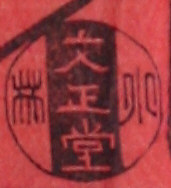






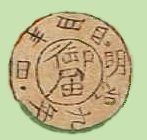







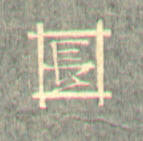



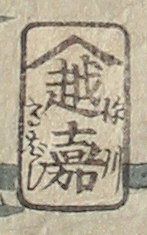








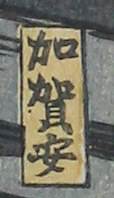
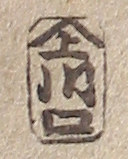
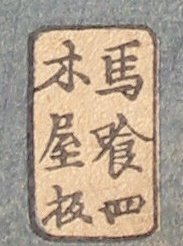

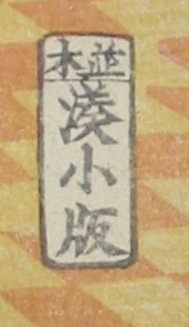










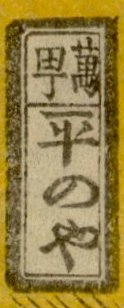
.jpg)

